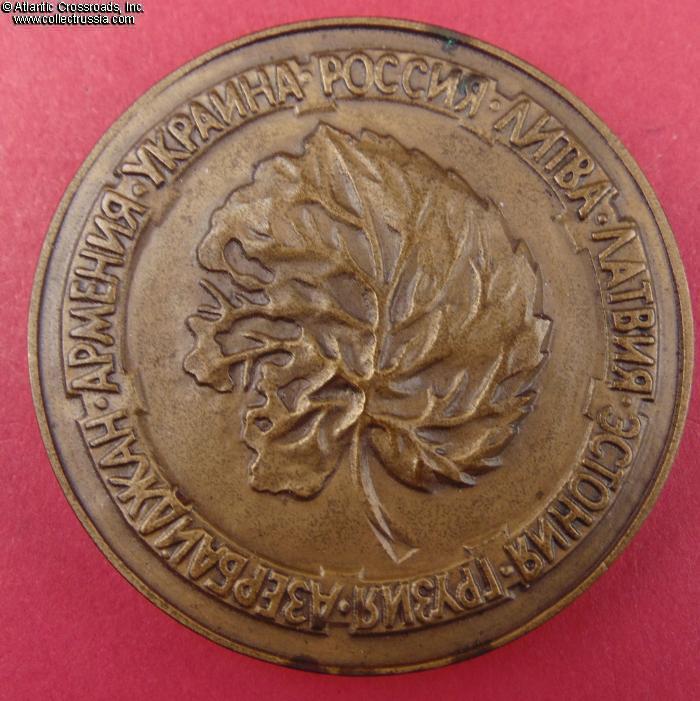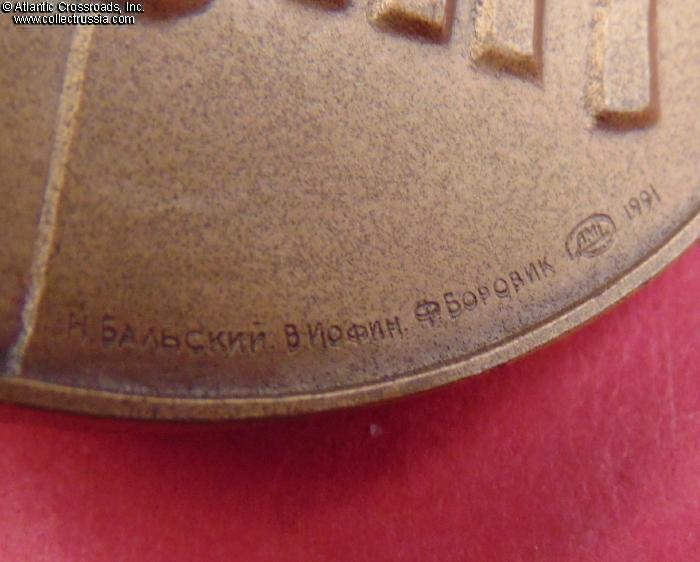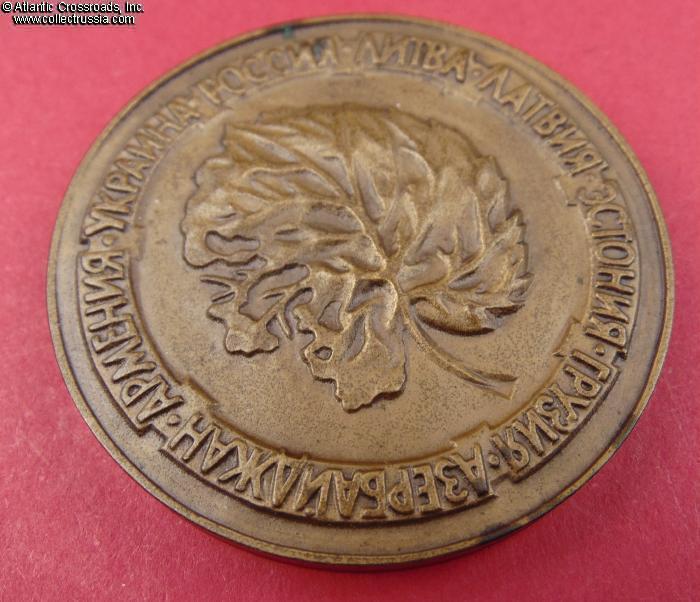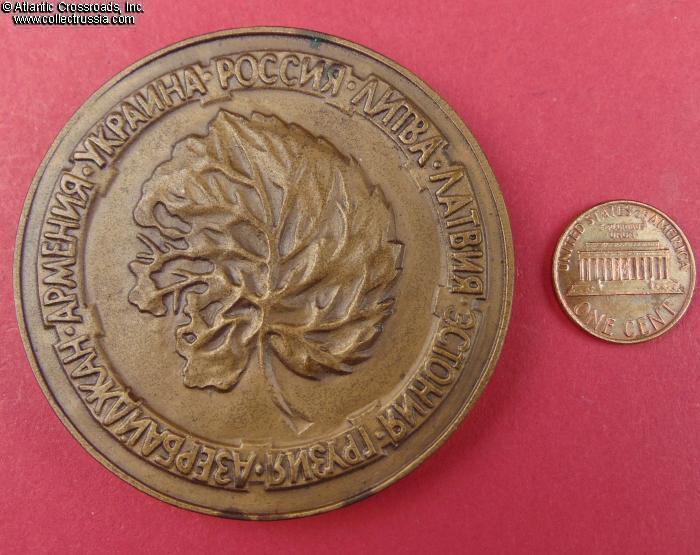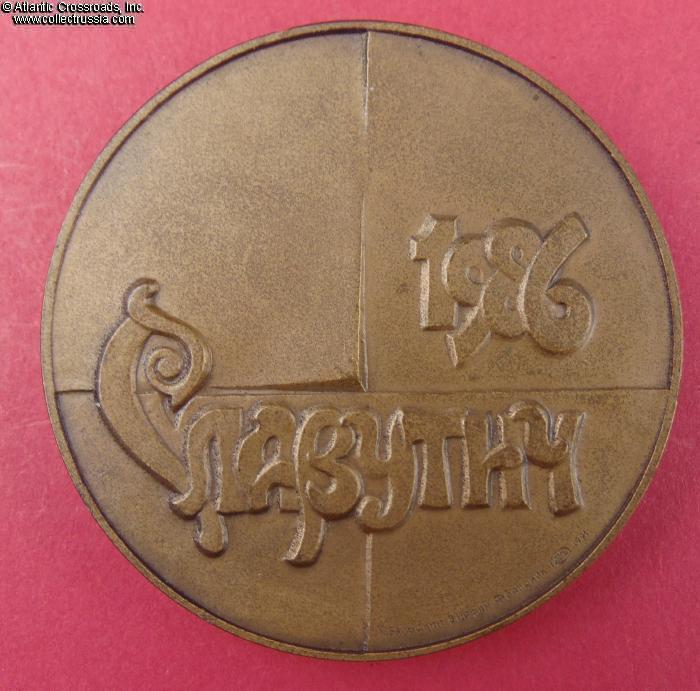
City of Slavutich Commemorative Table Medal, 1991 issue.
In bronze, 60.5 mm wide; weighs 133.4 g. The obverse features raised inscription "Slavutich 1986" in stylized script resembling Old Church
Slavonic. The field is divided into four sections meant to represent four sides of the world, i.e., wide international support provided to
the Soviet Union in dealing with the consequences of the Chernobyl disaster. In the lower right segment near the edge, there are the names
of the three artists who jointly designed the medal: N. Balskiy, F. Borovik, and V. Iofin followed by the logo of the Leningrad Mint and
1991 date of manufacture.
In bronze, 60.5 mm wide; weighs 133.4 g. The obverse features raised inscription "Slavutich 1986" in stylized script resembling Old Church Slavonic. The field is divided into four sections meant to represent four sides of the world, i.e., wide international support provided to the Soviet Union in dealing with the consequences of the Chernobyl disaster. In the lower right segment near the edge, there are the names of the three artists who jointly designed the medal: N. Balskiy, F. Borovik, and V. Iofin followed by the logo of the Leningrad Mint and 1991 date of manufacture.
Prominently featured on the reverse is a torn-off tree leaf symbolizing the displacement and trauma experienced by the citizens of Chernobyl and Pripyat in the wake of the 1986 catastrophe. The text along the edge mentions the nations within the Soviet Union that made a major contribution to building the new city of Slavutich for the evacuated population (clockwise from the top): Russia, Lithuania, Latvia, Estonia, Georgia, Azerbaijan, Armenia, Ukraine. It is interesting to see that the soon-to-be independent republics are referred to by their traditional national names rather than as Soviet republics (e.g. "Ukraine" vs "Ukrainian SSR"). The medal's artwork is conspicuously devoid of any Soviet or communist references.
The medal is in excellent condition, free of noticeable wear of any kind. The toning to the bronze is generally uniform, having just a few very minor darker areas on the reverse near the edge that are not detractive.
The city for the evacuated inhabitants of Chernobyl and neighboring Pripyat was conceived soon after the reactor meltdown at the Chernobyl Nuclear Power Station in 1986. When the scale of the disaster became obvious even to the slow on the uptake Soviet bureaucrats, resources earmarked for the project started pouring in. The construction began later that year; in the following year of 1987, the new city located near the northern border of Ukraine was officially inaugurated and named Slavutich (the ancient name of the Dnieper River). During the next year, it received its first settlers. The city was meant to be a showcase of modern architecture and urban planning and at least initially, eight of the Soviet republics provided construction crews and funds for the project. To this day, different districts of the city exhibit the national architectural style of the republic that built it. The effort largely petered out by 1990 as the Soviet Union went into its financial and political tailspin; the city was thus the last instance of a large-scale cooperation among the Soviet republics. Now known by its Ukrainian name Slavutych, it remains a relative success story boasting healthier population and higher birth rates than the average for modern Ukraine. The city was captured by the Russian troops in the initial phase of the 2022 invasion but was soon liberated escaping major damage to its infrastructure.
The commemorative medal was commissioned in the early part of 1991 at the Leningrad Mint by the executive council of Slavutich and Ukrainian Communist Party. There were approximately 5000 struck (the exact number is unknown, but the reference guide Commemorative [Table] Medal of the Soviet Period, 1919 - 1991 states that there were 10500 made in total including the counterpart Chernobyl Commemorative Table medal produced at the same time.) Interestingly, this medal was the last ever ordered at a Russian mint by Ukrainian authorities. It was also one of the last official medals of the Soviet era. Although meant to be awarded to the most distinguished builders of the city, in reality it was largely issued to VIP visitors and members of various international delegations.
/Commemorative [Table] Medal of the Soviet Period, 1919 - 1991, #2088/.
$80.00 Add to cart

